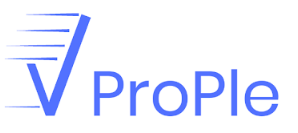This website use cookies to help you have a superior and more relevant browsing experience on the website.
How Is Interview As A Service Different From The Traditional Hiring Methods
-
30/12/2023

How interview as a service add value to in hiring process
As technology is emerging every day, so is the demand for effective, efficient, and exceptional services in every sector. In this era of specialization, the services that add value to your current process be it in any sector has tremendous value. Interview as a Service (IaaS) is one such service that adds value to your hiring process to streamline and improve the interview process. It is a model that leverages external providers and technology to manage and improve various aspects of the interview process during the hiring cycle.
This service is designed to enhance efficiency, objectivity, and effectiveness in evaluating candidates. Specialized interviewers may be employed to conduct assessments that require domain-specific expertise and often incorporate advanced technology, including artificial intelligence and machine learning, to automate and streamline the interview process.
Automated tools may be used for skills assessments, coding challenges, and even analyzing responses to behavioral questions. It can support various interview formats, including virtual interviews, asynchronous assessments, and on-demand video interviews. This flexibility allows candidates to participate in interviews at their convenience, reducing scheduling challenges.
IaaS is scalable, allowing companies to adapt their interview processes based on fluctuating hiring needs. This scalability is particularly useful for organizations experiencing rapid growth or those with varying hiring demands throughout the year and the providers may offer access to interviewers with specialized expertise, especially in technical domains which ensures that candidates are evaluated by professionals who understand the specific requirements of the role. It often provides analytics and data-driven insights into the interview process.
Organizations can use these insights to assess the effectiveness of their hiring strategies, identify areas for improvement, and make data-driven decisions and significantly reduce time-to-hire by automating certain stages of the interview process. Automated assessments and streamlined workflows allow organizations to quickly identify top candidates and move them through the hiring pipeline. It is cost-effective, particularly for organizations that don’t have the resources to maintain a large internal hiring team. By outsourcing certain interview stages, companies can reduce fixed costs associated with hiring processes.
What Is Traditional Hiring Process
The traditional hiring process typically involves a series of steps designed to identify, assess, and select the most qualified candidates for a job. While variations exist across industries and organizations. The process begins with the identification of a job opening within the organization. This can result from the creation of a new position or the need to fill a vacancy.
Employers create a detailed job description outlining the responsibilities, qualifications, and expectations for the role. This document serves as a guide for both recruiters and candidates. The job opening is advertised through various channels, including the company’s website, job boards, social media, and other relevant platforms. Recruiters review submitted resumes to shortlist candidates who meet the minimum qualifications outlined in the job description.
Shortlisted candidates are contacted for initial screening, which may involve a brief phone or video interview to assess basic qualifications and interest in the position. Qualified candidates are invited for one or more rounds of in-person or virtual interviews. These interviews may involve HR professionals, hiring managers, and other relevant stakeholders.
Depending on the position, candidates may be required to complete skills assessments, aptitude tests, or other evaluations to demonstrate their capabilities. Employers contact the candidate’s provided references to verify their work history, skills, and qualifications. A background check may be conducted to verify a candidate’s criminal history, education, and other relevant information.
A formal job offer is extended to the selected candidate, outlining terms such as salary, benefits, and start date. The candidate may negotiate aspects of the job offer, and upon reaching an agreement, they formally accept the offer. Once the candidate accepts the offer, the onboarding process begins, including orientation, training, and integration into the organization. It’s important to note that while this traditional hiring process is common, some organizations may adapt or modify these steps based on their specific needs, industry practices, or the nature of the positions they are hiring for. Additionally, advancements in technology have led to the incorporation of digital tools and automation at various stages of the hiring process.
Interview As A Service V/S Traditional Hiring Methods
Outsourcing Interviews: In Interview as a Service, companies may outsource certain aspects of the interview process to specialized providers. This could include screening interviews, technical assessments, or other stages of the hiring process. Traditional methods usually involve conducting all interviews in-house.
Technology Integration: IaaS often utilizes advanced technologies such as artificial intelligence (AI) and machine learning to assess candidates. Automated tools may be used to evaluate coding skills, analyze responses to situational questions, or even gauge soft skills. Traditional methods may rely more on manual processes.
Scalability: IaaS allows for greater scalability. Companies can scale up or down based on their hiring needs without having to scale their internal hiring teams accordingly. Traditional methods may require a more fixed and resource-intensive internal infrastructure.
Flexibility: Interview as a Service provides flexibility in terms of when and where interviews are conducted. Virtual interviews, asynchronous assessments, and other flexible approaches are often part of IaaS. Traditional methods may be more rigid, requiring candidates to be physically present for interviews.
Specialized Expertise: IaaS providers may offer access to specialized interviewers or assessors with expertise in specific domains. This can be particularly valuable for technical roles where in-house teams may lack certain skills. Traditional methods rely on the expertise of the internal hiring team.
Data-Driven Insights: IaaS often provides data-driven insights into the interview process. Analytics and reports generated by technology can offer valuable information about candidate performance, areas for improvement in the hiring process, and other actionable insights. Traditional methods may not have the same level of data analytics.
Time Efficiency: Interview as a service can be more time-efficient, especially when it comes to initial screening stages. Automated assessments and video interviews can help quickly identify qualified candidates, allowing in-house teams to focus on final-stage interviews. Traditional methods may involve longer lead times and more manual efforts.
Cost Considerations: Interview as a Service may be a cost-effective solution, especially for companies with fluctuating hiring needs. Traditional methods may involve higher fixed costs associated with maintaining an internal hiring team.
Many companies adopt a hybrid approach, combining the benefits of technology and outsourcing with their internal hiring expertise to create a customized and effective hiring strategy.
It’s important to note that the distinction between traditional hiring and Interview as a Service can vary, and the term “Interview as a Service” may be used differently by different providers. The prime problem statement that the Interview service providers focus on is the interview capacity gap. It is the era of specialization, and the best way to tackle the interview capacity gap is outsourcing interviews to the Interview experts.


